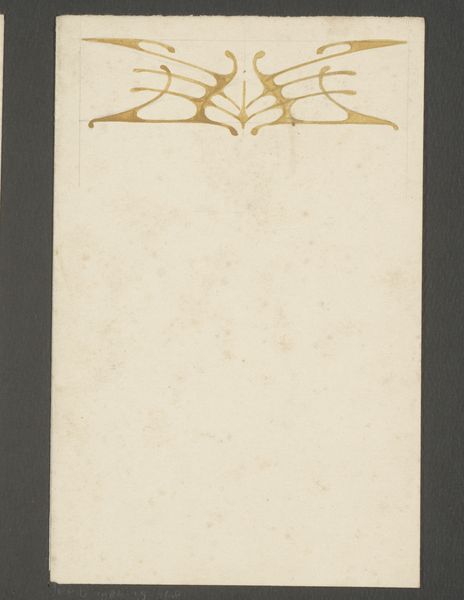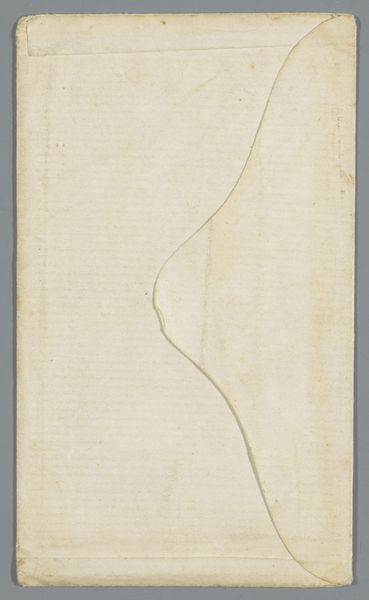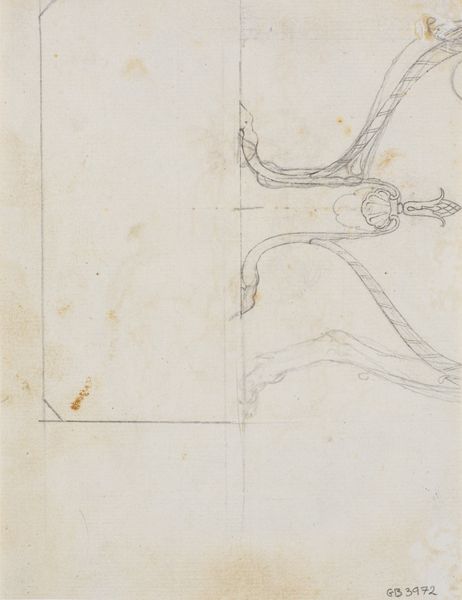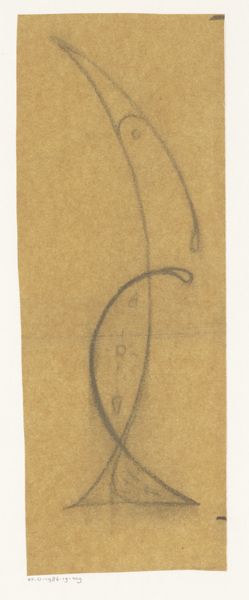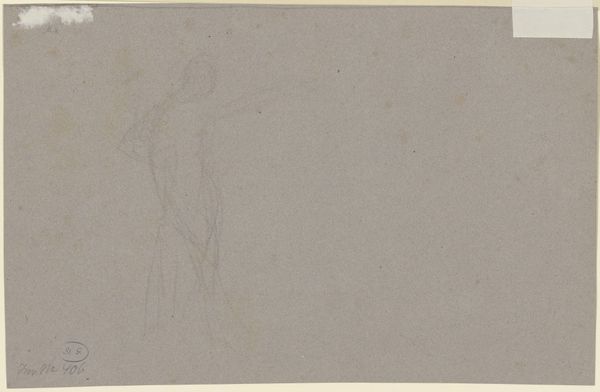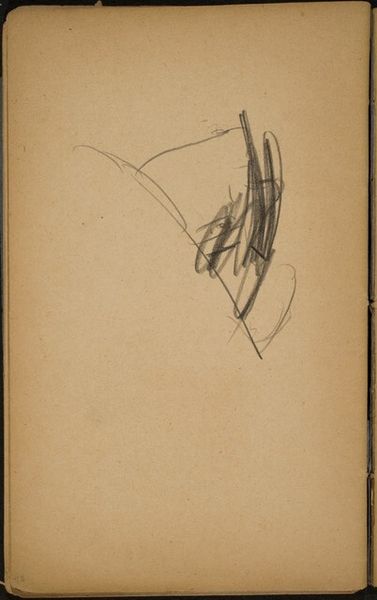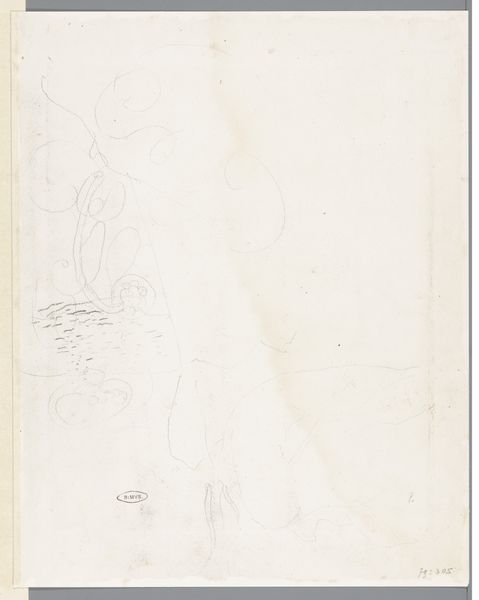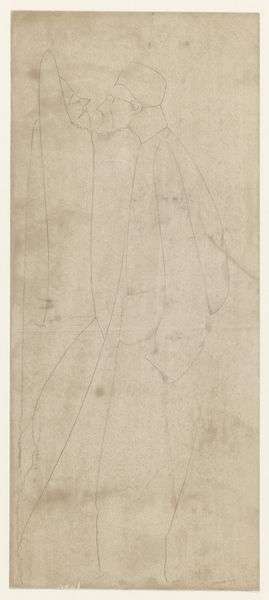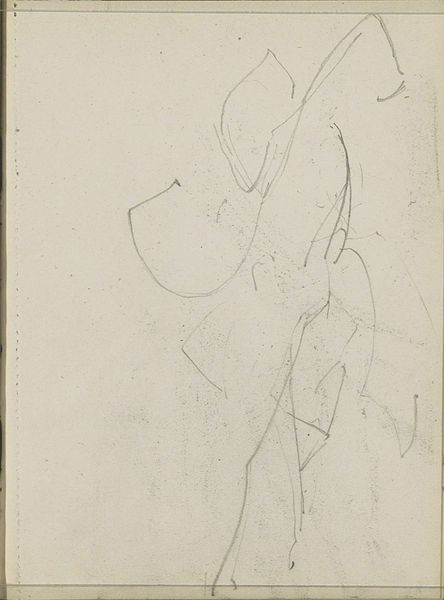
drawing, pencil
#
drawing
#
art-nouveau
#
water colours
#
underpainting
#
pencil
#
abstraction
#
line
Dimensions: height 843 mm, width 350 mm, height 910 mm, width 419 mm
Copyright: Rijks Museum: Open Domain
Curator: Good morning, welcome. Before us, we have Jacob Bendien’s "Meditistic Arabesque," believed to be created sometime between 1910 and 1930. It’s a striking drawing, composed using pencil and watercolour, showcasing an interesting dance between Art Nouveau and pure abstraction. Editor: It gives me an immediate impression of fluidity, almost like looking at an x-ray of blossoming plant, suspended in an ethereal space. Curator: I find that interesting because while Bendien embraced abstraction, he always believed images held inherent symbolic weight. Those flowing lines, that central form… I wonder if he meant to capture some essence of the “feminine divine,” maybe reflecting prevalent archetypes during his time? Editor: That's possible. The era saw burgeoning interest in spiritualism and the occult, intersecting with artistic explorations. How would the cultural institutions have received such works back then? Was there a demand or appetite for abstract symbolism or a challenge to traditional modes of representation? Curator: The art world was, of course, in flux. Abstraction was challenging academic conventions, but many sought a deeper meaning *within* that abstraction, as opposed to rejecting meaning outright. Bendien was attempting a reconciliation between the two. It's as if the linear qualities point toward the expressionistic style used within Art Nouveau during the first world war Editor: Interesting. The line becomes the symbol in itself, foregoing other iconic aspects. Its sparseness allows the viewer to meet the piece where they find most resonation. But tell me, doesn't the title somewhat limit the freedom in interpretation? Curator: A fair point. "Meditistic" perhaps guides our interpretation. The imagery is sparse and the neutral colours invite contemplation. I'm curious how Bendien saw the meditative and the Arabesque relating, given that he had a very specific interest in certain theosophic symbol systems, like Blavatsky's. Editor: Well, considering all, it’s captivating to consider how “abstract art” was far from a purely formal exercise, that it carries an ideological payload tied into occult symbolism, artistic license, and society’s gradual acceptance of the undefinable. Curator: Exactly. It challenges our preconceptions about both abstraction and ornamentation, revealing hidden depths of human thought within the seemingly simple arrangement of forms. Editor: A very fitting ending for a truly enigmatic, yet mesmerizing piece.
Comments
rijksmuseum about 2 years ago
⋮
Around 1913, Jacob Bendien and several other Dutchmen developed their own form of entirely abstract art. They presented it in Amsterdam as ‘absolute art’, derived from the ‘absolute music’ – music not explicitly about anything – that was making its appearance at the time. In his work Bendien strove for what he called ‘Meditism’, an expression of emotions that was controlled by the mind.
Join the conversation
Join millions of artists and users on Artera today and experience the ultimate creative platform.

